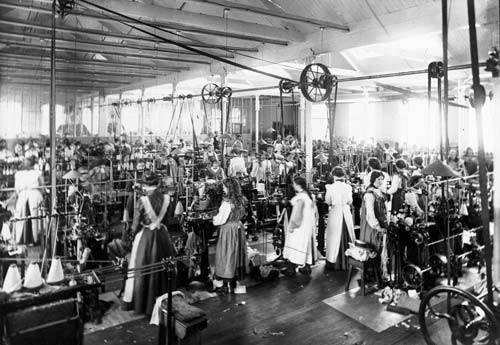Though the technology invented
during the industrial revolution is on a different level than what is being
produced today, the idea and principle is the same; with the replacement of
“man-made” items. With the industrial revolution the way things were made or
manufactured were being changed in many different fields of work; for example,
textiles. Textiles, woven fabric, was originally hand spun; but the invention
of a wheel and loom changed the process and made it quicker and ultimately
cheaper to produce the same product (Man-made to Machining).
The idea of the process of how goods were made was one of the biggest changes
during the industrial revolution. The speed of the machinery invented had
outpaced artisans’ production speeds, which ultimately causes the goods to be
cheaper and more readily available (Man-made to Machining). The use of
machinery was in large factories that needed workers to man the machines,
providing jobs for the working classes.
With the prices of these goods dropping, the want of them was rising. More
people and different classes could afford the same goods that might have been
too expensive to afford. The demand grew, and industries would have to produce
their goods faster to match up with the rising demand (Man-made to Machining).
Though the machines needed workers to run and hadn’t fully replaced them, it
did minimize the dependency on man-made only goods. It showed that machines
could do the same thing, faster and cheaper.
Reference
"Man-Made to
Machining - History of the Industrial Revolution." Man-Made to
Machining – History
of the Industrial Revolution.
Thomasnet.com, n.d. Web. 29 Nov. 2015.
Poddar, Ankur. "Causes and
Effects." The Industrail Revolution. N.p., n.d. Web. 28 Nov. 2015. <http://firstindustrialrevolution.weebly.com/>.

No comments:
Post a Comment